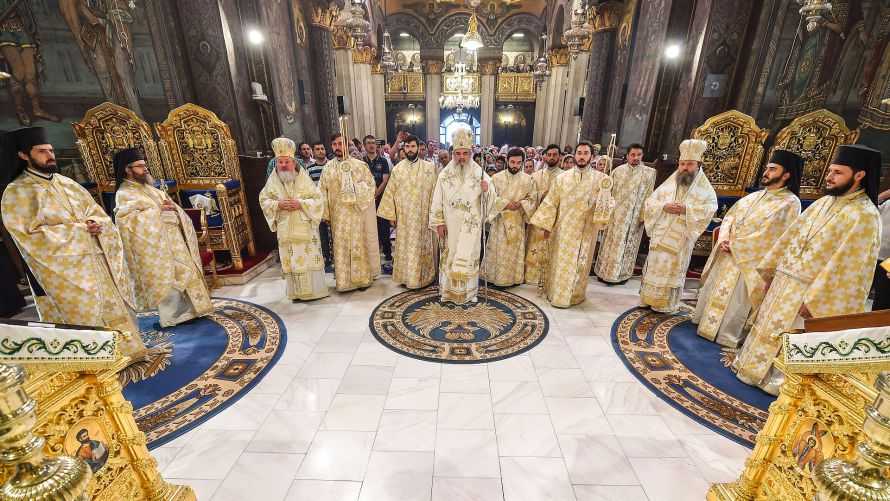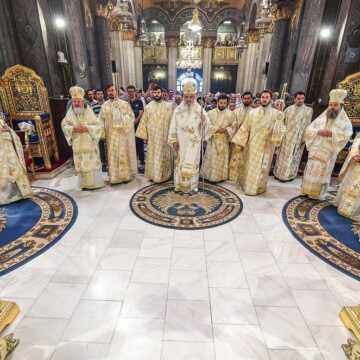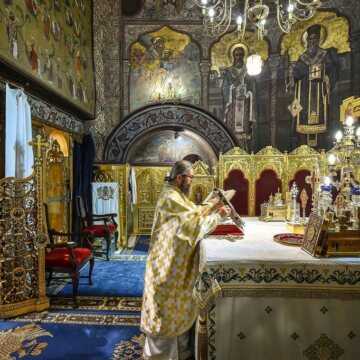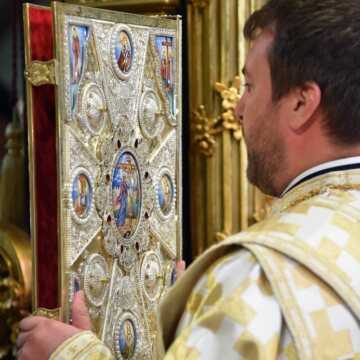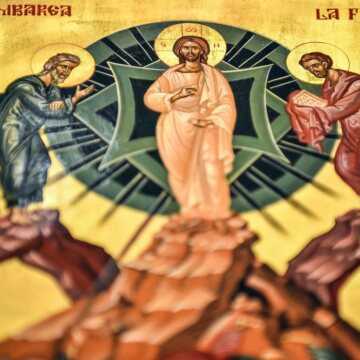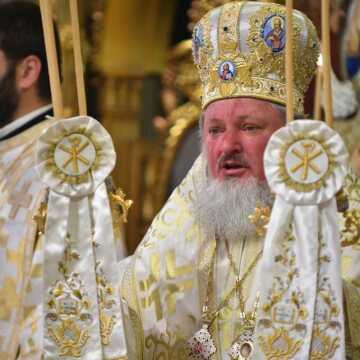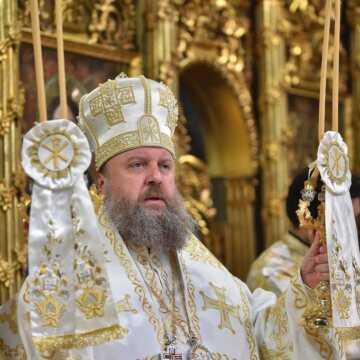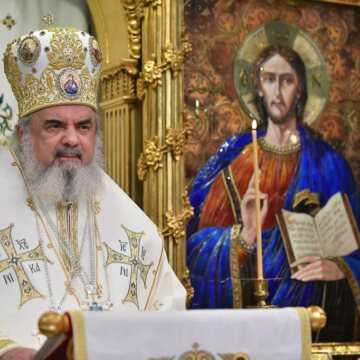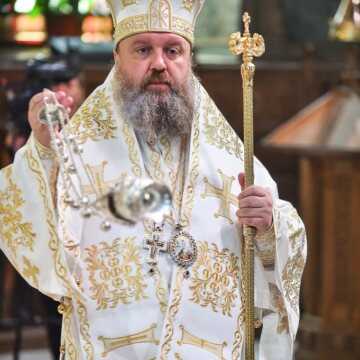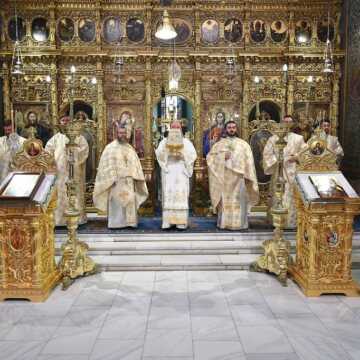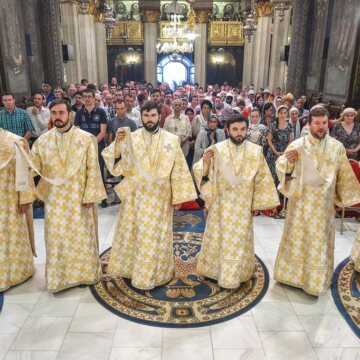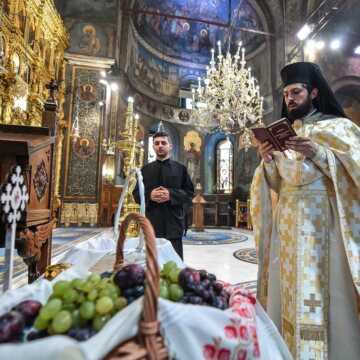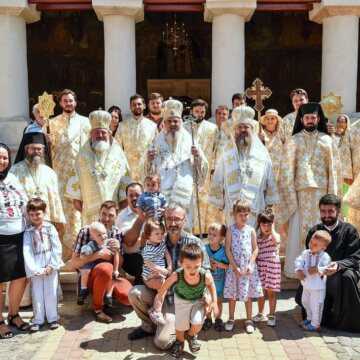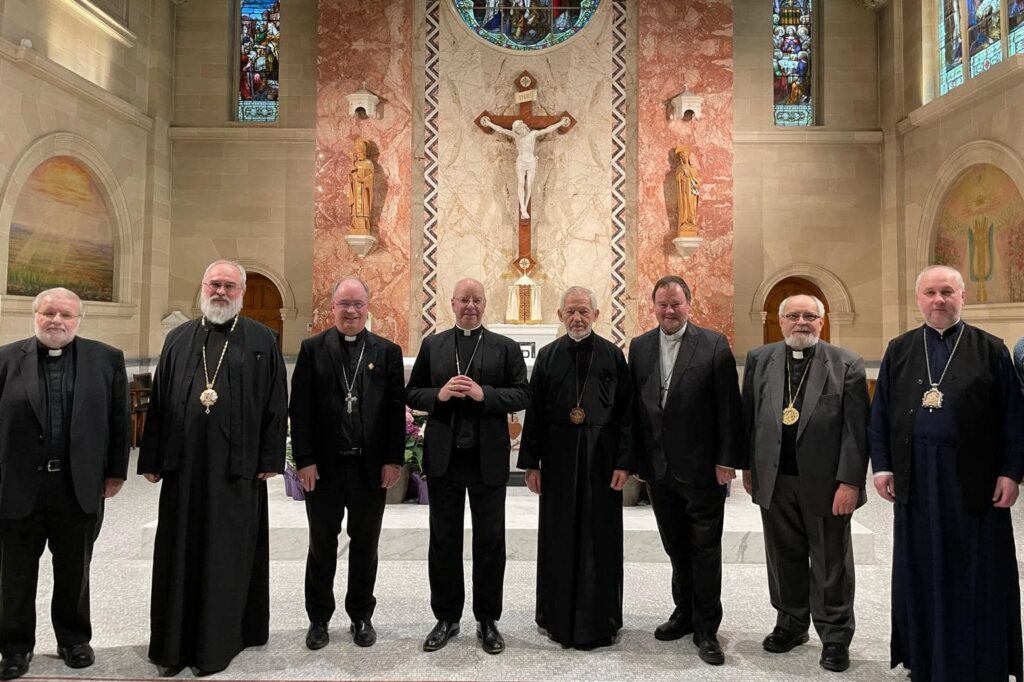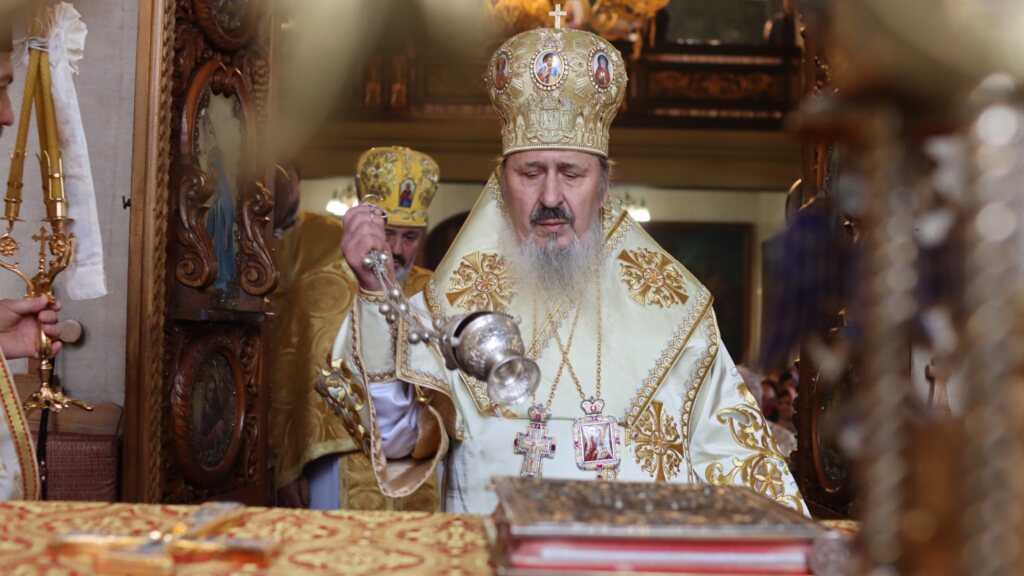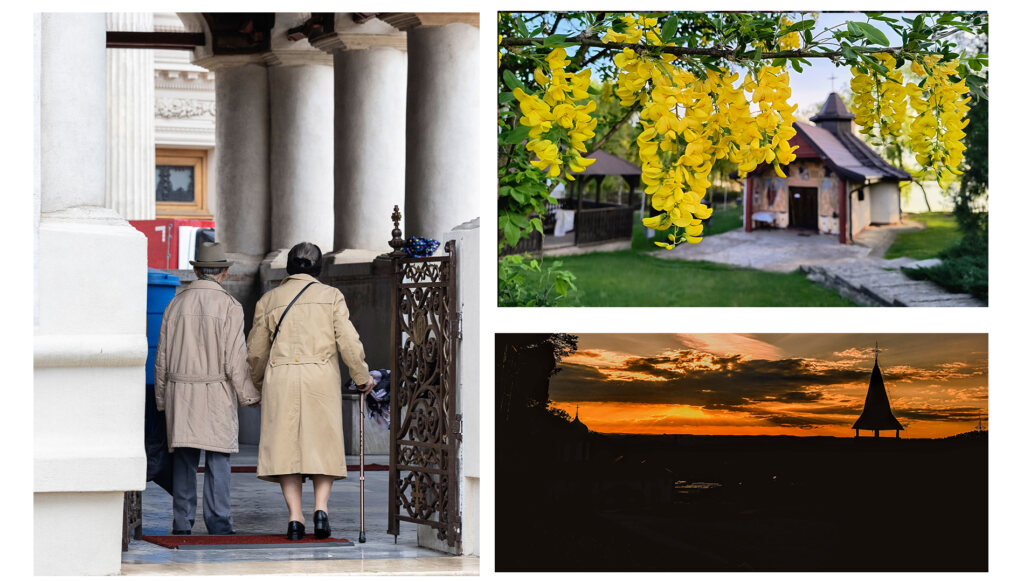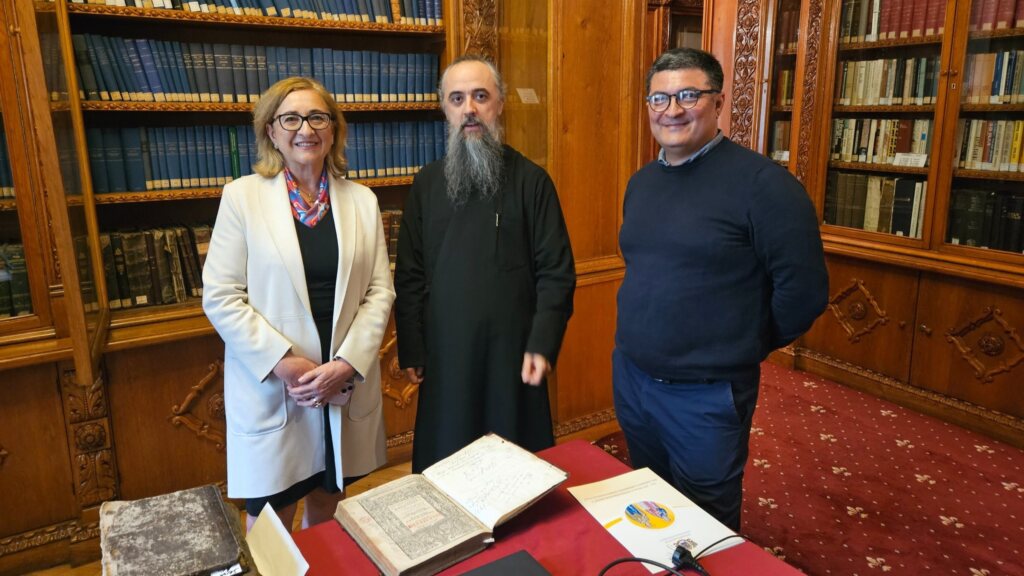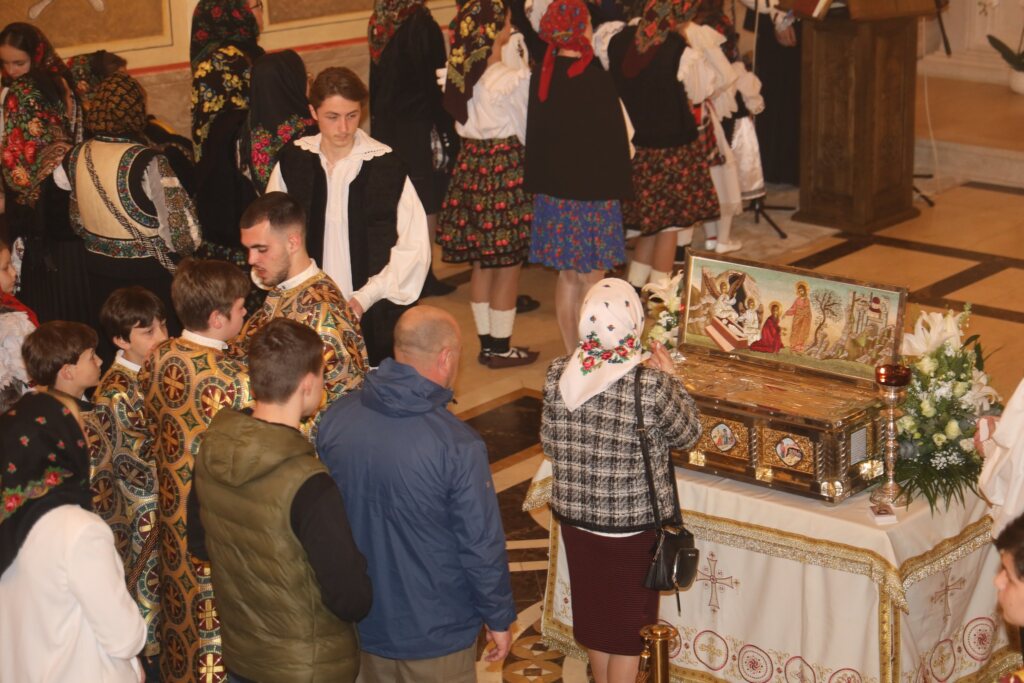The Feast of the Transfiguration of the Lord is a feast of light, joy, a feast that shows us our ultimate future, namely that man is not made for grave, but for eternal life, not for darkness, but for the never setting light of the Kingdom of Heaven, the Patriarch of Romania told those present in the Patriarchal Cathedral on the feast of the Transfiguration of the Lord, Saturday, 6 August 2016.
On the occasion of this great feast, the Divine Liturgy was celebrated in the Patriarchal Cathedral by His Beatitude Daniel, Patriarch of the Romanian Orthodox Church. Besides His Beatitude, His Grace Varlaam Ploieşteanul, Assistant Bishop to the Patriarch, and His Grace Timotei Prahoveanul, Assistant Bishop to the Archdiocese of Bucharest also concelebrated, assisted by a group of priests and deacons.
The Primate of the Romanian Orthodox Church delivered the sermon in which he spoke about the spiritual meanings of the feast of the Transfiguration of Christ, our Saviour.
Christ accepts the humbleness of the sufferance on the cross in order to bring the glory of His Resurrection to the world
His Beatitude Patriarch Daniel explained that today’s feast presents us the glory of the resurrection of Christ before His passions and death on the cross in order to show that the Saviour is the Lord of Glory and that His sacrifice on the cross is assumed right of His own will out of love for humans to deliver them through His death and resurrection.
First of all, the Transfiguration of Jesus Christ, our Saviour, shows us the glory of His resurrection before His passions and death on the cross in order to strengthen the disciples in faith, to show that the One who will suffer on the cross is the Lord of glory and that He does that out of love for humans, namely He passes through death to deliver the humans through His Resurrection (…) It is a pedagogical work of spiritual formation of the disciples, for their encouragement and strengthening in faith so that when they see the Lord disfigured on the cross to remember that He is the Lord transfigured, the Lord of glory and that He accepts the Mystery of the Cross out of His own will, in humble merciful love, in order to share the glory of His Resurrection to His disciples and the whole world. He accepts the humbleness of the sufferance on the cross to bring the glory of His Resurrection to the world.
Transfiguration and the glory of the Most Holy Trinity
At the same time, the Patriarch of the Romanian Orthodox Church emphasised the fact that the glory of the Most Holy Trinity was shown on Tabor Mount, at the Transfiguration of the Lord.
Secondly, the Transfiguration of Jesus Christ, our Saviour shows us the glory of the Most Holy Trinity because the bright cloud that came down upon the disciples symbolised or anticipated, was a witness of the presence of the Holy Spirit; the voice of the Heavenly Father was heard saying about Jesus: “This is my beloved Son, with whom I am well pleased; listen to him!”
The glory of the Tabor is also the glory of the human image before the fall
His Beatitude has also explained that the mystery of the transfiguration shows the glory of the human image before the fall, as well as the glory of man’s likeness with God.
The Transfiguration of the Lord also shows us the bright image of the first man, of our forerunners before falling. The glory of Tabor is also the glory of the human image before falling. This mystery of the Transfiguration of the Lord shows us not only the glory of the first man, but also the glory of man’s likeness with God. The first man, Adam, had the glory of the image before falling, but he had to obey God, to cooperate with Him, with His grace to reach a higher stage, namely the glory of the likeness with God or the perfect holiness as much as possible for man. Jesus Christ, the new Adam, not only restored the glory of the image of the first man, but also showed the perfect image through the total likeness with God, as He was the Son of God too, the Primate of the Romanian Orthodox Church said.
At the end of the Divine Liturgy, the harvest of the first fruits of the field was blessed, consisting in grapes and a honeycomb as sigh of the gratitude to God who gives His gifts to humans, gifts received through the blessing of God.
His Beatitude Patriarch Daniel explained the relationship between today’s feast and the blessing of these fruits.
Christ is the Sun of Righteousness and the spiritual sun who enlightens every faithful man making him better, gentle, merciful, converting and enlightening him. The grapes are sour in the beginning, but if they are ripe they become sweeter and more transparent, if they stay longer in the sun and receive the sunshine. A sour fruit turns into a sweet one because it let itself touched by the sun, by the light and warmth of the sun. The same happens with the pagan and evil man, passionate and fallen who became embittered because of sin, and who is enlightened in his mind and soul, in his senses and in all his deeds, through repentance and prayer, through receiving the Holy Communion and doing good deeds. Thus, the same as the ripe grape is pleasant and sweet, so is the mature man who has become spiritually ripe in the light and warmth of the Grace of Christ and who starts being like Christ: merciful, gentle and good hearted.
Every year, on 6 August, the Orthodox Church celebrates the Transfiguration of the Lord. This feast is also popularly called Preobrajenia or Probojenia and it remembers the time of the miraculous transfiguration of the Lord, on Tabor Mount, in front of His disciples Peter, John and James.
